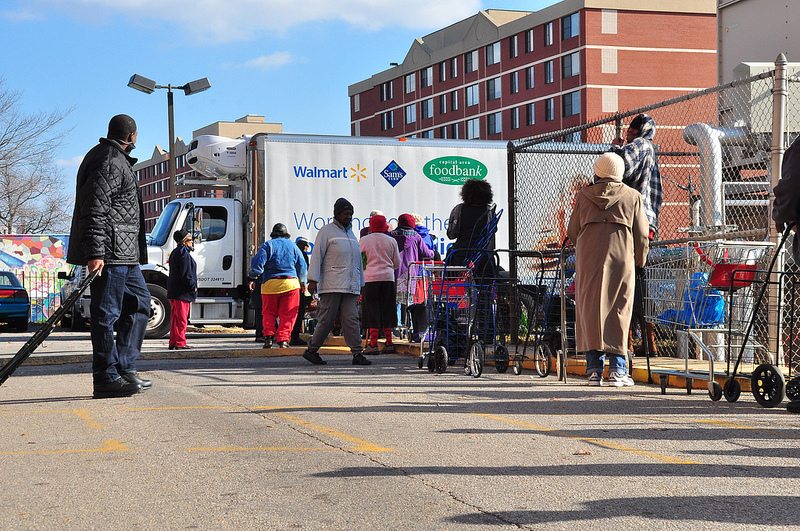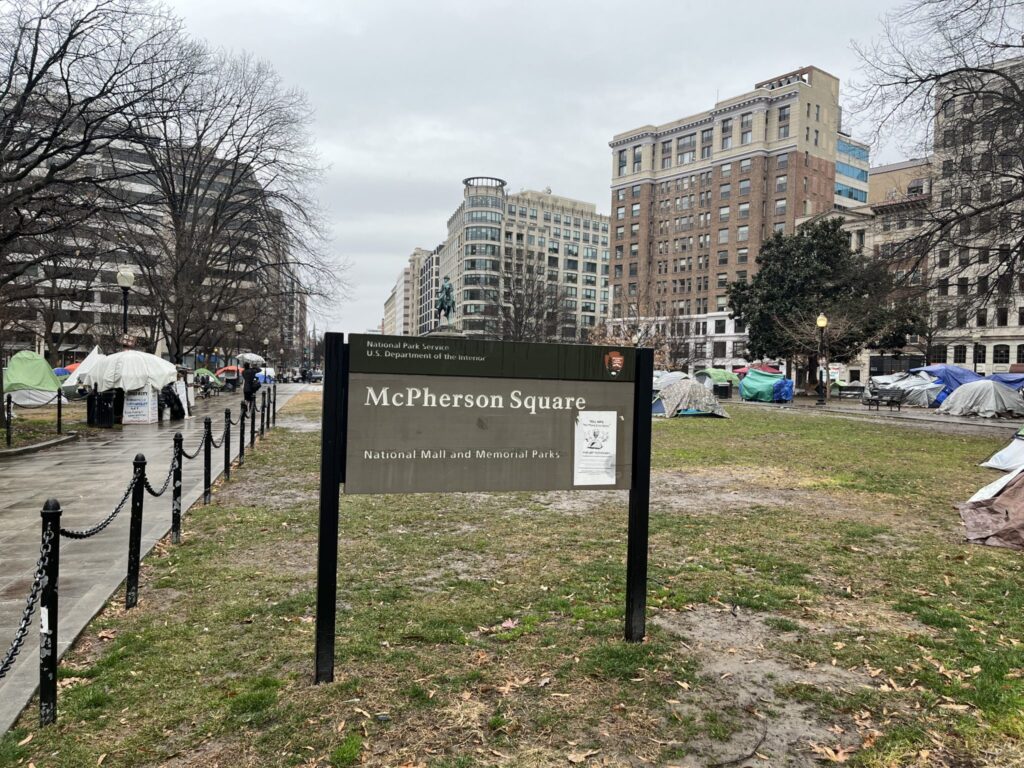Elderly residents of Garfield Terrace look forward to the third Wednesday of every month. They line up in anticipation of a visit from Capital Area Food Bank’s Mobile Food Pantry. The pantry on wheels, with its load of potatoes, carrots, onions and cabbages, makes a big difference, particularly in these hard times.
“It helps the family out a lot,” says Garfield Terrace Resident Council President Lethia Summers.
“With the recession, a lot of people can’t find jobs.”
Neighbor Edward Harmon couldn’t agree more.
“Anytime you can get free food it will help you out,” he says. “ You can make a lot of meals and save a lot of money.”

Adds Terrace resident Holly Alleyne, “They’re doing a good job I would say. They give you plenty.”
Darrick Munson helps distribute the food at the Terrace. It brings back memories of his great-grandmother and grandmother who lived here. Now his mother lives at the Terrace and Munson understands the need. There are few grocery stores in the area, near Cardozo Senior High School. The pantry does a great service by providing access to fresh foods, Munson says.
Addressing hunger among seniors has become a special focus of the work of the Capital Area Food Bank (CAFB).
According to the U.S. Census, 12.1 million senior citizens are at risk of or suffering from hunger by living at or below 185 percent of the federal poverty level. In DC, as many as 40 percent of senior citizens are at risk of hunger, the CAFB estimates.
Every year, the CAFB conducts a Thanksgiving campaign to provide seniors with bountiful Thanksgiving food bags. But hunger is a concern among all age groups these days, officials at the food bank say. The food bank and its network of partners have witnessed a 25 percent increase in the demand for food assistance since 2006, according to communications director Dylan Menguy.
Menguy says that more and more people are relying on the CAFB, and it’s not just that experiencing poverty. Even many working class families are becoming increasingly stretched in these tough economic times. Menguy refers to this as the “new face of poverty.” Just five percent of the clients served by the CAFB are homeless, according to Menguy.
“It’s a very wide range of folks. A small number of those folks are homeless,” Menguy said.
“Many people are finding themselves in a situation where they need the services that the bank provides.”
Based upon income levels. the food bank estimates that there are are over 680,000 people struggling with hunger in the area, according to Menguy.

The food bank makes it a mission to reach those in need, collecting and distributing groceries to nearly half a million people. All told, the Capital Area Food Bank distributes 30 million pounds of food, including 15 million pounds of fresh produce. The CAFB serves over 2.1 million meals each month, and over 84,000 pounds of food is distributed through both warehouses daily, resulting in over 500,000 pounds distributed each week. Currently, 70 fresh produce drops are delivered each month to 40 sites in low-income neighborhoods.
Food bank officials say that 92 cents of every $1 donated is used for food distribution, transportation and programs. To meet the growing need, in June the CAFB moved into a new 123,000 square foot Bedford Falls Foundation Food Distribution Center located at 4900 Puerto Rico Ave., NE. The new facility is over twice the size of the former warehouse on Taylor Street, NE, which means that the bank can distribute a higher quantity and quality of food.
Part of the work that CAFB deals with involves getting healthy foods to people living in areas known as “food deserts, ” areas where supermarkets and grocery stores are scarce. Many poor residents in Wards 7 and 8 do not own cars and those who rely upon corner stores and gas stations often lack access to nutritious foods.
A partnership with Clagett Farm, a working farm, owned and operated by the Chesapeake Bay Foundation in Upper Marlboro, Maryland, helps provide fresh produce to these residents. Clagett Farm donates 40 to 50 percent of its yield to CAFB and CAFB then provides the produce, which consists mainly of organically grown vegetables to the people and families living in wards 7 and 8. CAFB does similar work in Prince Georges County.
“We are helping them get closer to healthy foods,” Menguy said.







